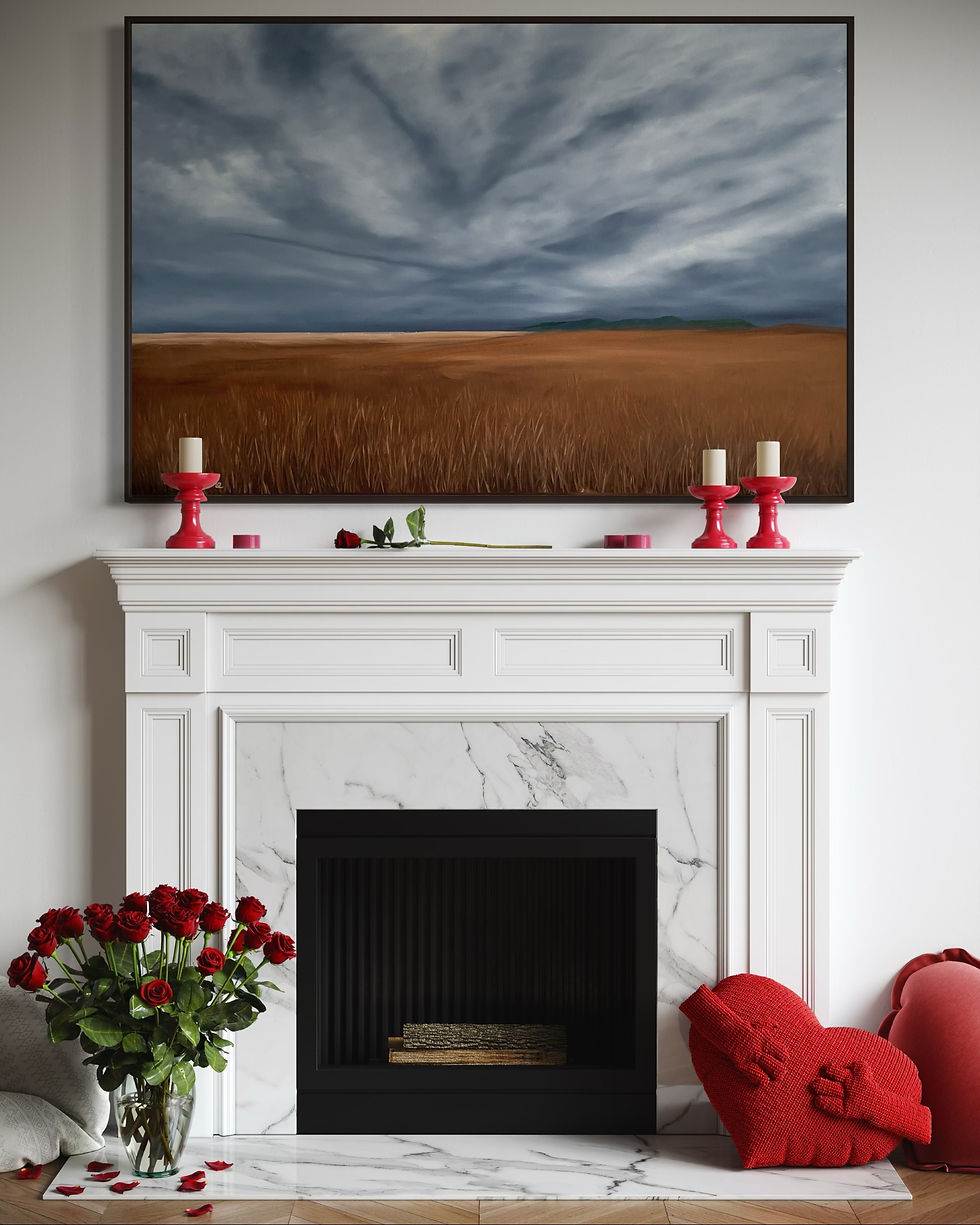ART AS CURRENCY: WHY ORIGINAL ART HOLDS REAL VALUE IN A FAKE WORLD
- Steve Tame HH Dip (A.Th.).

- 2 days ago
- 3 min read
By Steve Tame

Most people look at art and think of colour, beauty, decoration — something nice to hang above the couch. But for as long as humans have traded, conquered, migrated and built empires, art has been something much more powerful:
Art has always been currency.
Not in the sense of coins and notes, but as a form of value that survives long after financial systems fade and governments fall. Art holds value that banks can’t freeze, inflation can’t devalue, and technology can’t replicate.
And the funny thing? We’re more aware of its power today than ever before.
Art Has Always Been Money – Even When People Pretend It Isn’t
Go back through history and you’ll see one pattern repeated over and over:
The people with power stockpiled art.
Kings, queens, the Vatican, governments, dynasties — they hoarded paintings, sculptures, relics and icons. They didn’t just do it because they were pretty. They did it because art was:
A symbol of power
A store of value
A tool of influence
A quiet way to move wealth
Gold is obvious. Money is traceable. But art? Art can hang on a wall or sit in a shipping crate and hold millions in silent value.
Even today, you can’t move $10 million through a bank without raising eyebrows —but you can move a painting worth $10 million in a climate-controlled box with no questions asked.
That’s not an accident. It’s the oldest wealth-management trick in the book.
Why Art Holds So Much Value Today
We live in a world full of AI, mass-produced everything, cheap prints, endless feeds and disposable culture. So, what does that make original art?
Rare. Human. Untouchable. And therefore more valuable than ever.
An original painting carries things no machine can manufacture:
A moment in an artist’s life
A physical record of emotion
A story that can’t be copied
A texture and energy that only hands can create
When you buy original art, you’re not buying pigment on canvas —you’re buying meaning, identity, truth, and legacy.
That’s real value.
Art Is Emotional Currency
Let’s be honest — most people don’t buy art because they “need” it.
They buy it because it hits them somewhere deeper. It stirs something ancient inside.
A good artwork does one of two things:
It reminds you who you are
Or it shows you who you want to be
That emotional pull is a form of currency all on its own — the kind that can’t be printed, forged or duplicated. It’s the same reason people fall in love with a piece instantly and say:
“I don’t know why… but that one’s mine.”
That moment — that spark — is the real exchange.
Art as Identity Currency
When you hang an original piece in your home, you’re saying something about yourself without using a single word:
This is how I see the world
This is what I value
This is what I connect to
Art becomes part of who you are. It becomes personal currency — the kind that doesn’t lose value, because it grows with you.
Art as Spiritual Currency
There’s another layer to this, one most people feel but rarely talk about:
Art carries energy. It holds the intention, the hand movements, the memory and the mood of the person who created it.
It’s a human imprint.
In a world where everything seems digital, detached and disposable, original art brings something back into the home that we’ve all been missing:
Human presence. Authenticity. Realness.
That’s a kind of wealth money can’t buy — but art can hold.
Why This Matters to Collectors Today
The biggest collectors — from private investors to everyday people — all say the same thing:
“Art moves with you. It grows with you. And it outlasts everything else.”
You can’t say that about a car. You can’t say that about furniture. You can’t say that about most investments.
But art? Art lives on. Sometimes for centuries.
Every artwork you buy becomes:
part of your story
part of your legacy
part of the world long after you’re gone
That’s currency in its purest form.
Where My Own Work Fits In
My paintings — like the Petrichor series — aren’t just landscapes or storms. They’re emotional memory. They’re childhood. They’re resilience. They’re nature’s voice after the chaos.
If someone hangs one in their home, they’re not just collecting art — they’re collecting a feeling, a reminder that beauty and calm return even after the storm.
If that’s not a kind of currency, I don’t know what is.
Final Thought
In a world full of fakes, copies and noise, original art stands as one of the last things that is truly real.
And real things always hold value.




























Comments